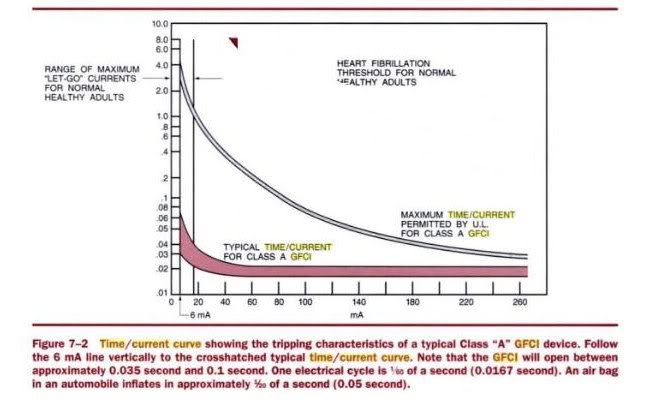I need some advice from some experienced professional electricians. I am a professional Home Inspector with over 3500 inspections to date. I am chairman of the standards of practice committe for CalNachi and find myself in a heated debate on how to inspect and report the condition of GFCI breakers on existing residences.
There is one powerful group who say the only way to test a GFCI is to push the button and not use any testing device what so ever. This is also the manufacturer's recommendation.
There is a less powerful group who use the three prong testers with the GFCI test button to test/locate the GFCI's. We are very much aware of the limitations of the three prong tester with the possiblity of there being a undiscoverable mis wired condition somewhere in the system that is beyond the scope of a home inspection. But even with this limited tool it at least allow the inspector to determine if the circuit is energized and reports obvious problems. When used in conjunction with the inspection of the panel and any subpanels this simple tester greatly increases the understanding of the system and if there is a significant problem present.. It "helps" the inspector to help understand if the system is properly bonded, open grounds, hot/neutral reversed, etc.
There are also accusations that the three prong testers have been known to explode in the hand of the inspector. I have been unable to document this circumstance. Does anyone have first hand knowledge of this happening?
Suretest testers and the like probably take the inspector out of the "generalist" category and brings him into the area of an "expert" electrician thus greatly increasing his liability. And keep in mind a home inspector is only on the job for 4 or 5 hours, not long enough to be comprehensive in any one system so their use is not an option.
In my opinion by using the GFCI test button on the tester allows the home inspector to at least "locate" the downstream GFCI protected outlet, not necessarily to test it. Just pushing the test button on the breaker does not provide enough information to the client to make an informed decision on such an important safety device.
IS inspecting GFCI's the same a locating a GFCI protected outlet? It would be greatly helpful to hear your opinions on how to inspect GFCI's and how to locate GFCI's. Please keep in mind we are not doing code inspections and that codes are not retroactive to existing buildings. But also we are responsible for determining if a system is "functionally" safe to meet state law.
Brad Deal
20/20 Home Inspections
There is one powerful group who say the only way to test a GFCI is to push the button and not use any testing device what so ever. This is also the manufacturer's recommendation.
There is a less powerful group who use the three prong testers with the GFCI test button to test/locate the GFCI's. We are very much aware of the limitations of the three prong tester with the possiblity of there being a undiscoverable mis wired condition somewhere in the system that is beyond the scope of a home inspection. But even with this limited tool it at least allow the inspector to determine if the circuit is energized and reports obvious problems. When used in conjunction with the inspection of the panel and any subpanels this simple tester greatly increases the understanding of the system and if there is a significant problem present.. It "helps" the inspector to help understand if the system is properly bonded, open grounds, hot/neutral reversed, etc.
There are also accusations that the three prong testers have been known to explode in the hand of the inspector. I have been unable to document this circumstance. Does anyone have first hand knowledge of this happening?
Suretest testers and the like probably take the inspector out of the "generalist" category and brings him into the area of an "expert" electrician thus greatly increasing his liability. And keep in mind a home inspector is only on the job for 4 or 5 hours, not long enough to be comprehensive in any one system so their use is not an option.
In my opinion by using the GFCI test button on the tester allows the home inspector to at least "locate" the downstream GFCI protected outlet, not necessarily to test it. Just pushing the test button on the breaker does not provide enough information to the client to make an informed decision on such an important safety device.
IS inspecting GFCI's the same a locating a GFCI protected outlet? It would be greatly helpful to hear your opinions on how to inspect GFCI's and how to locate GFCI's. Please keep in mind we are not doing code inspections and that codes are not retroactive to existing buildings. But also we are responsible for determining if a system is "functionally" safe to meet state law.
Brad Deal
20/20 Home Inspections


